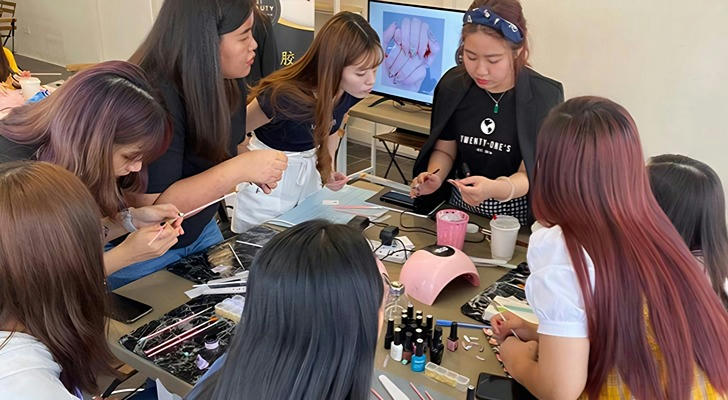A guide to self-study for manicurists: training, licenses and employment prospects
With the continuous development of the nail industry, more and more people hope to master nail skills through self-study and enter this professional field. Understanding the training requirements, license application process and employment prospects of manicurists is crucial for those who aspire to become manicurists. This article will help readers sort out the entry path and plan their career development based on actual needs.
I. Basics of manicurist training

1.Training duration and content
Different states in the United States have different requirements for the training duration of manicurists, generally between 250 and 600 hours. The training content covers the basics of nail care, disinfection and hygiene, various nail art techniques (such as manicure, coloring, carving, light therapy, etc.) and customer service knowledge.
2.Training institution selection
It is important to choose a training institution approved by the state government to ensure that the course meets the requirements for license application. Courses usually include theoretical learning and practical training to help students master the necessary skills.
3.Combination of self-study and tutoring
Some content can be learned through video tutorials and books, but actual operation skills need to be accumulated through professional training and practice. It is recommended to combine online learning with offline practice.
II. Application process for nail technician license
1.Age and education requirements
Most states require applicants to be at least 16 to 17 years old and have a high school diploma or equivalent.
2.Exam content
To apply for a license, you need to pass a written exam and a practical exam. The written exam mainly examines theoretical knowledge, such as hygiene standards, product ingredients and operating procedures; the practical exam tests the ability to operate nail technology.
3.Temporary license and formal license
Some states allow applicants to obtain a temporary license to start working after completing some training and passing the preliminary exam, and apply for a formal license after passing all the exams.
4.License renewal and continuing education
Licenses are generally renewed every two to four years, and some states require completion of continuing education courses to maintain the validity of the license.
III. Analysis of employment prospects for manicurists
1.Stable industry demand
As awareness of beauty care increases, the demand for manicure services continues to grow, and the industry provides diversified employment opportunities, including beauty salons, nail salons and self-employment.
2.Career development path
From junior manicurists to senior manicurists, store managers or trainers, there is a broad space for career development. Accumulating customer resources and improving technical level are the key.
3.Possibility of self-employment
After having a certain amount of experience and customer base, you can choose to open a personal nail studio to expand your business scope.
IV. Practical suggestions for self-taught manicure
1.Develop a learning plan
Rationally arrange theoretical learning and practical training time to ensure balanced development of skills.
2.Focus on practical practice
Practice basic nail care, coloring, design and other operations to improve hand feel and efficiency.
3.Use high-quality resources
Choose authoritative teaching videos, professional books and online courses, and combine offline training to improve learning effects.
4.Take the exam preparation class
Take professional tutoring courses for the license exam content to improve your pass rate.

V. Summary
Becoming a manicurist requires systematic training, passing the license exam, and constantly accumulating practical experience. Understanding the specific requirements of each state, combining self-study and formal training, can effectively improve skills and professional competitiveness. Reasonable planning of learning and career paths will help you achieve steady development in the nail industry.
